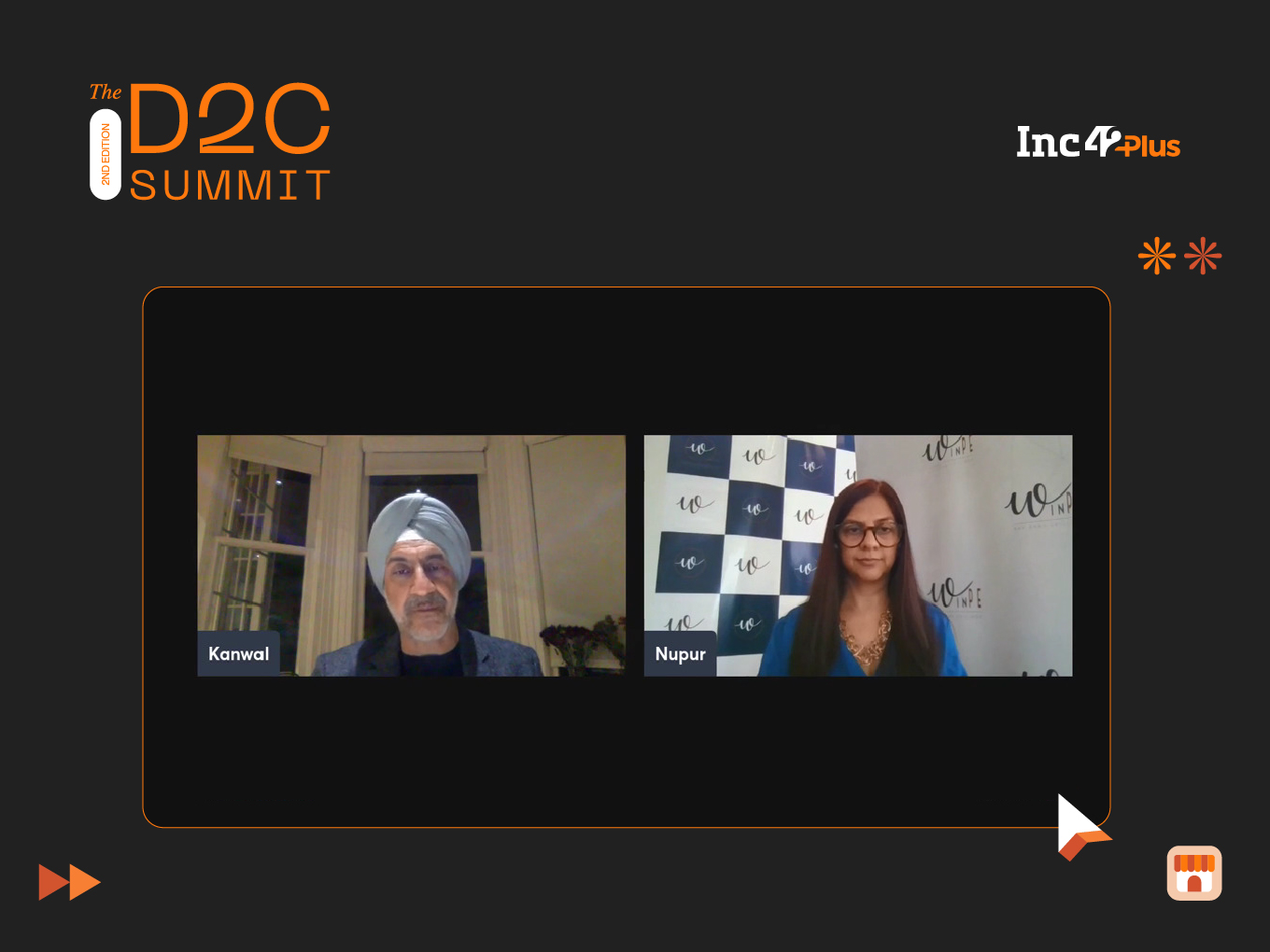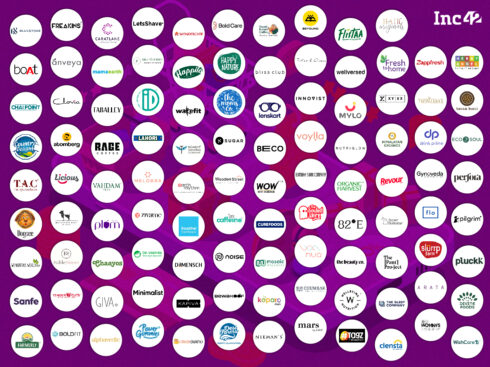SUMMARY
Investors are eyeing every slice in the D2C pie, but through an Environmental, Social, and Governance or ESG lens
Startups are being encouraged to go green in every way possible not just by investors, but also by the shifts in consumer demand, which is backed by data
VCs and angel investors are talking more about ESG, diversity and inclusion metrics and looking for these indicators in potential investments
“People, planet and profits”
This is the new mantra for investors, startups and everyone that is creating something today. And it’s more true when it comes to consumer brands that have an impact on the entire value chain and therefore the people and the planet.
Led by Kanwaljit Singh, founder of Fireside Ventures and moderated by Nupur Garg, founder of industry forum WinPE, one of the first sessions at second edition of The D2C Summit 2021 was one that posed some of the most pressing questions in the world today.
Investors are eyeing every slice in the D2C pie, but through an environmental, social, and governance or ESG lens.
As Singh mentioned, ESG investing essentially boils down to investing in companies that have high environmental, societal and governance responsibility values. It is a socially responsible form of investing that not only prioritises profits, but also looks at the impact on the environment, the people and the planet.
Watch The Full Session From The D2C SummitUnder ESG, the environmental aspect is about putting ecology first and protecting the environmental balance in operations, models and product development. The social criteria examines how startups manage their relationships with the people they touch — employees, suppliers, customers and communities. And finally, the governance aspect deals with a company’s leadership, board composition, responsibility to stakeholders and investor rights.
Investors and consumers are speaking with their wallets when it comes to sustainable products and brands. Garg pointed out that recent surveys show more than 78% of business leaders and investors said that sustainable investing is more important, while on the customer side, 54% chose products with less or no packaging and 55% of consumers choose products from companies that protect the environment.
“There are guidelines for investors to invest responsibly. The questions being asked before an investment are changing. We are talking more about ESG, and inclusion metrics,” Singh added.
Startups making consumer products are being encouraged to go green in every way possible. Investors are now focussing squarely on ESG investing to bring more diversity on corporate boards, create a real impact and actively change how business is conducted. But why is that and how do the dynamics work?
The Cause And Effect Cycle
They say charity begins at home, and the same is the case with ESG. Investors cannot be expected to lift the burden by themselves, and neither can the burden fall squarely on startups and founders.
According to Singh, there’s a cause and effect cycle at play when it comes to ESG and impact investing. Investors demand more ESG-friendly operations and models these days, but that’s because there are examples set by other startups around the world.
He added that this is one of the most important conversations to have in the current time. “The narrative for being much more conscious as an investor towards ESG are taking centre-stage today. Not just for brand-building or marketing, but it’s the need of the hour,” the VC said.
At the same time, the nature of entrepreneurs is changing from being cut-throat to being more thoughtful and conscious of impact. So there’s a reverse flow happening as well, which also excites VCs such as Singh.
Young entrepreneurs are being more proactive towards issues that plague the world and their community, which is evident in how startups are pledging to reduce their carbon footprint or allocating portions of their revenue for social causes and then tracking this work as part of their review processes.
Watch The Full Session From The D2C SummitD2C Brands And Product-ESG Fit
Of course, like with everything to do with business, one cannot forget the bottom line, even when protecting the ESG guidelines. The idea is to develop a product and model that meets these goals, rather than editing out innovation and features to make the products more sustainable.
Singh pointed to examples of organic clean label brands that continue to use plastics, because replacing plastics in packaging is not always possible. So while alternatives come up, companies and brands cannot just wait or simply ignore the ecological impact of plastics. They can opt for offsetting initiatives such as plastic clean-up, reforestation or other areas that compensate for the usage of plastics.
Watch The Full Session From The D2C SummitThe impact can be made not just through such initiatives but even in product development, by eliminating waste, reducing carbon emissions and contributing to green energy generation or utilising renewable energy in manufacturing.
Measuring The ESG Impact
These days having an ESG component in your model is as essential as good unit economics. This is unlike corporate social responsibility, which was oftentimes just lip service. ESG goes beyond this and talks about measurable impact within the three parameters.
“We are evaluating companies on the parameters of ESG. Decisions of investing are being guided by frameworks that have an ESG component to them. Founders need to be aware that investors are asking for these parameters,” the Fireside Ventures founder said.
When it comes to finding and backing companies, consumer tech startups and D2C brands, Singh believes that only the startups that take a data-led approach to ESG will attract funds. He added that impact investors are raising capital — with some impact investors being LPs in large funds — and deploying it in a meaningful way and startups that don’t adhere to ESG norms might lose out on this channel.
But it’s not just about talking about the steps that one would take, but to approach it from an outcome-driven perspective. Investors, Singh said, are building up a network of eco-friendly chain partners and non-profits that can enable companies to champion their ESG goals. It will continue to require a collaborative effort, because one company cannot do the change itself.
Watch The Full Session From The D2C SummitWinPE’s Garg added that having resources dedicated to the effort is a big step because it becomes a key responsibility for a stakeholder within the employee. It also means revisiting goals and targets, setting up review systems and having a roadmap for bolstering this part of the business as one scales up.
Singh agreed and said that Fireside Ventures is working with programmes for recycling and connecting them to its portfolio.
ESG Investments = Looking At The Bigger Picture
“It is this ground swell that will fulfil the big picture goals. We cannot escape this mandate because the situation is becoming more dire and desperate. Talking about such issues is key at forums such as the D2C Summit and especially in the beginning so it sets the tone.”
Ultimately, it’s not about sacrificing parts of the business to be more ESG ready. Singh added that businesses should include ESG impact in the scale-up models, and even if the product line is not developed on a sustainable model right now, the idea should be to mould your next generation of products to fit the criteria.
Garg added that it’s not always about looking at a startup in isolation when it comes to the ESG criteria. For instance, under the social and governance aspects, businesses that put financial inclusion and gender diversity first, tend to be businesses that also attract women investors, thereby creating a cascading positive effect in the tech ecosystem.
But this also trickles down further as more and more women join the workforce, which forces bigger changes on the ground — in how girls are educated and how financial diversity is improved.
Young entrepreneurs need to be educated on the ESG way of business modelling and how it can be scaled up without upsetting these ideals.
Issues such as climate change cannot be solved overnight and neither can the broader goals of financial inclusion on gender and identity lines. So it needs to be a continuous effort, which is again tied to setting up the right systems to achieve the goals.



























